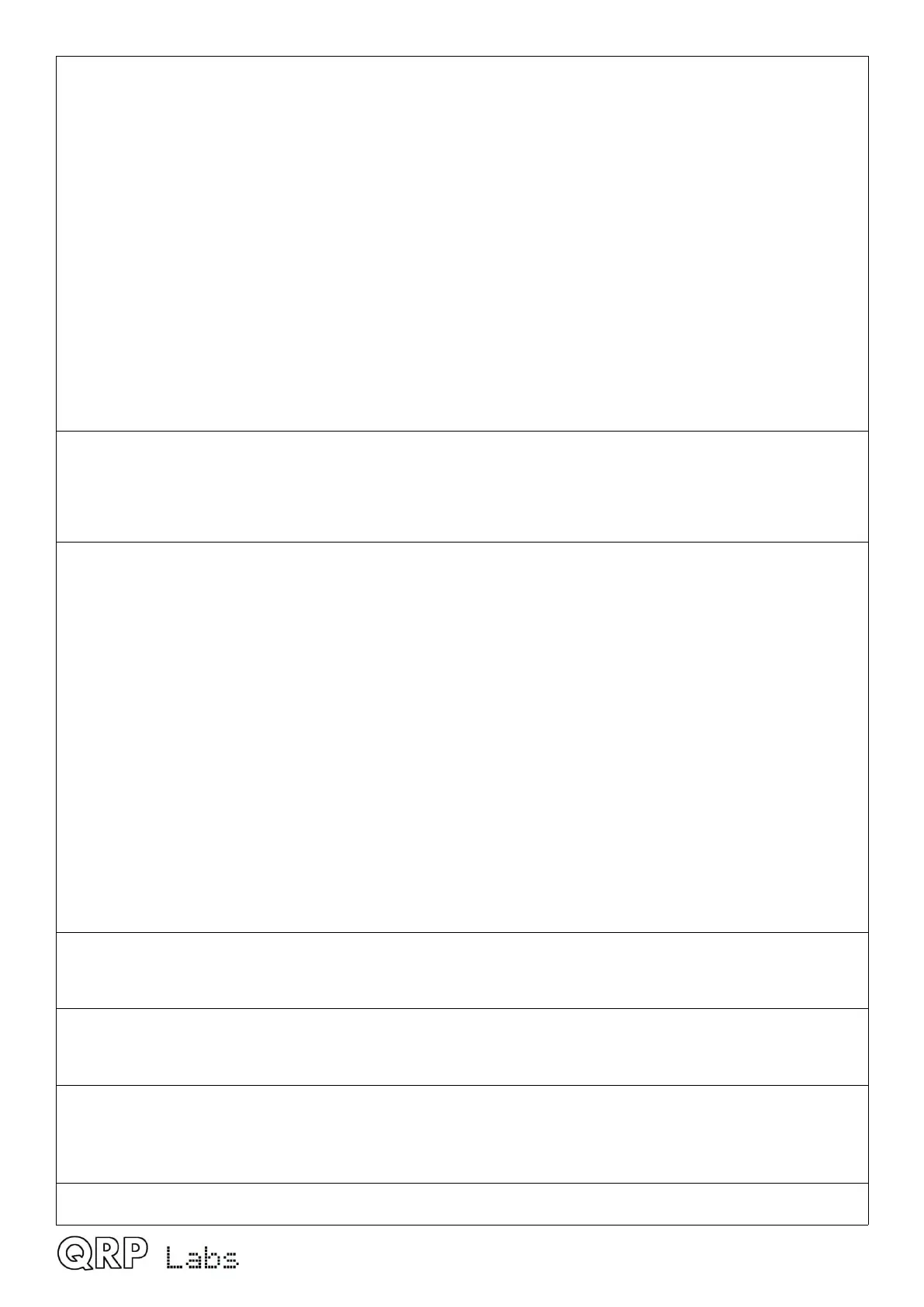• 11-digit operating frequency (VFO A or B, according to the VFO mode setting and transmit/
receive state
• 5 spaces
• 5-digit RIT frequency, as +/-9999Hz e.g. RIT up 200Hz returns “+0200” in this field
• RIT status: 0 = RIT OFF, 1 = RIT ON
• XIT status: always 0 because QCX+ has no XIT
• Memory channel bank number: always 0
• Memory channel number: always 00
• Transceiver status: 0 = RX, 1 = TX
• Operating mode: always 3 (CW)
• Receive VFO: 0 = VFO A, 1 = VFO B
• Scan status: always 0
• Split: 0 = Simplex operation (VFO mode A or VFO mode B), 1 = Split
• Tone: always 0
• Tone number: always 0
• Space character
KS: Get/Set Keyer speed
Set: Sets the Keyer speed to the specified number of words per minute
Get: Gets the current Keyer speed setting (in words per minute)
KY: Get/Set message for immediate sending
Set: Initiates a CW message transmission at the current keying speed. The format of the command
is KY followed by a space, followed by the message to be sent, followed by a semicolon
termination character. For example command
KY HELLO;
will initiate CW transmission of the text “HELLO”.
Get: Returns:
KY0; if message sending is in progress and the transmit text buffer is not more than 75% full
KY1; if message sending is in progress and the transmit text buffer is more than 75% full
KY2; if no message is being sent, therefore the transmit text buffer is emtpy
?; if the attempted message would overflow the transmit buffer; in this case it is canceled
Note: The KY transmit text buffer is 80 characters long. It is a circular buffer. It is acceptable to send
new messages with KY before the message sending is complete, they are simply appended to
the transmit buffer. You may not send a message that would overflow the buffer, if attempted
the message will simply be ignored and error code ?; returned.
MD: Get operating mode
Get: Always returns 3 (CW)
OM: Get the radio’s model number
Get: Returns the radio’s model number. For QCX+ this is QC so the result is simply OMQC;
QM: QCX+ Menu
The QM command allows get/set of any item in the QCX+ menu system. It is not part of the TS-480
CAT command set, it is specific to the QCX. Please refer to the paragraph below for a full description.
QU: QCX+ Update
QCX operang manual, rmware 1.07, manual edit 0.03 44
